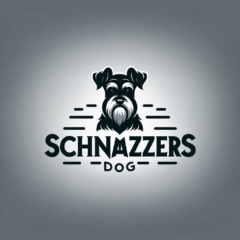Dogs have been our loyal companions for centuries, and it’s no secret that larger breeds are a popular choice among dog enthusiasts. Among them, the Black Russian Terrier and the Giant schnauzer stand out as majestic figures, known for their imposing physiques, intelligence, and protective nature. However, while these breeds share many similarities, there are also significant differences that cater to unique preferences and lifestyles. In this comprehensive guide, we will delve into the origins, history, temperament, physical characteristics, training and exercise needs, health considerations, and living with a Black Russian Terrier or Giant Schnauzer. By the end, you’ll have all the information necessary to choose the perfect companion for your life.
Origins and History: A Journey through Time
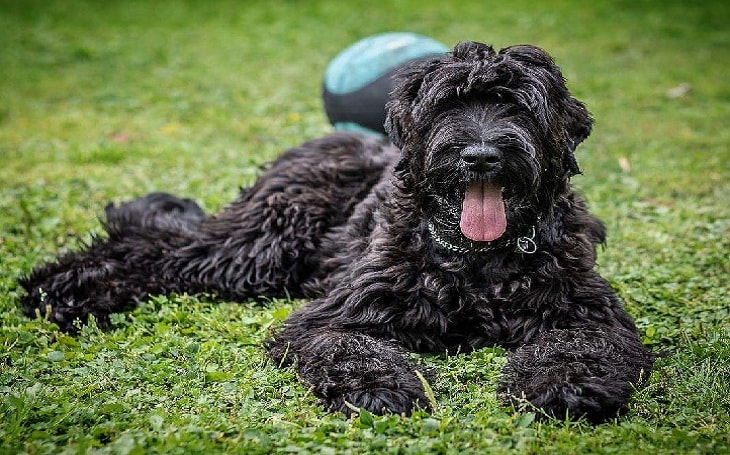
The Black Russian Terrier:
Born in the USSR during the 1950s, the Black Russian Terrier is a relatively new breed, a product of intentional crossbreeding. Its lineage traces back to several iconic breeds: the Rottweiler, the Black Terrier (Russian Black Terrier), the Airedale Terrier, and the Giant Schnauzer. The goal? To create a loyal, agile, and intelligent guard dog for military and police purposes. Its name reflects its origin and appearance – a large, black-coated terrier.
During World War II, the Soviet Army faced a shortage of working dogs and sought to develop a native breed for their canine units. They wanted a versatile dog that could work in various climates, withstand harsh conditions, and be fearless, alert, and trainable. After years of selective breeding and crossbreeding, the Black Russian Terrier was officially recognized as a breed in 1968. It quickly gained popularity and spread to other parts of the world, including the United States, where it was recognized by the American Kennel Club (AKC) in 2004.
The Giant Schnauzer:
This breed boasts a much longer history, dating back to the 19th century in Germany. Known as the Schnauzer in German, it actually encompasses three sizes: miniature, standard, and giant. The Giant Schnauzer, born from the desire for a larger, more robust working dog, evolved further with the introduction of the Great Dane and the Irish Wolfhound. Its primary role was to herd and guard livestock, but it also proved its worth as a reliable messenger and guard dog during the World Wars.
After World War II, the breed’s population had significantly decreased, and efforts were made to revive it. With the help of dedicated breeders, the Giant Schnauzer was restored to its former glory and became a popular choice for police and military work. It was officially recognized by the AKC in 1930 and has since become a beloved family pet and show dog.
Temperament and Personality: Exploring the Differences
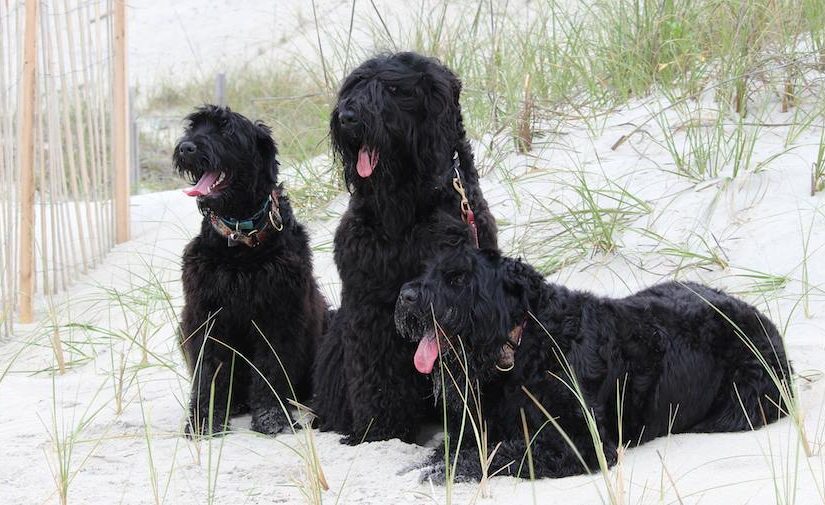
Both the Black Russian Terrier and the Giant Schnauzer are known for their intelligence, loyalty, and protective nature, making them excellent guard dogs. However, there are subtle differences in their temperament and personality that make them suitable for different lifestyles.
Black Russian Terrier:
The Black Russian Terrier is a confident, courageous, and independent breed. They are fiercely loyal to their owners and can be wary of strangers, making them great watchdogs. However, early socialization is crucial to ensure they don’t become too suspicious or aggressive towards people they don’t know. They have a strong prey drive and may chase smaller animals, so they must be trained to control this instinct.
Black Russian Terriers are highly intelligent and require mental stimulation and regular training to keep them engaged and well-behaved. They are eager to please their owners, making them relatively easy to train. However, their independent nature and stubbornness can make training a challenge at times.
Giant Schnauzer:
The Giant Schnauzer is also confident, loyal, and protective but tends to be more reserved than the Black Russian Terrier. They are not as suspicious of strangers and may warm up to them after proper introductions. However, they are still excellent watchdogs and will bark to alert their owners of any potential threats. Early socialization is crucial for this breed to ensure they are well-behaved around people and other animals.
Giant Schnauzers are highly intelligent and thrive on mental and physical challenges. They excel in various activities such as obedience, agility, and tracking. They require regular exercise and mental stimulation to prevent boredom, which can lead to destructive behavior. Training a Giant Schnauzer requires patience and consistency, as they can be strong-willed and independent.
Physical Characteristics: Size, Coat, and Appearance

While both breeds boast an imposing stature and black coloration, there are notable differences in their size, coat, and overall appearance.
Black Russian Terrier:
The Black Russian Terrier is a large and robust breed, standing between 26-29 inches at the shoulder and weighing between 80-140 pounds. They have a thick, double coat that serves as insulation against harsh weather conditions. The outer coat is coarse, while the undercoat is soft and dense, giving them their signature “bearded” look. They come in only one color – black – and require regular grooming to prevent matting and maintain their coat’s health.
Giant Schnauzer:
As the name suggests, the Giant Schnauzer is a significantly larger breed, standing between 24-28 inches at the shoulder and weighing between 55-80 pounds. They have a wiry, thick coat that comes in two colors – solid black or salt and pepper (a mix of black and white hairs). Like the Black Russian Terrier, they have a double coat that requires regular grooming to prevent matting and maintain their appearance.
In terms of overall appearance, the Giant Schnauzer has a more refined and elegant look compared to the rugged, muscular appearance of the Black Russian Terrier.
Training and Exercise Needs: Which Breed is Right for You?
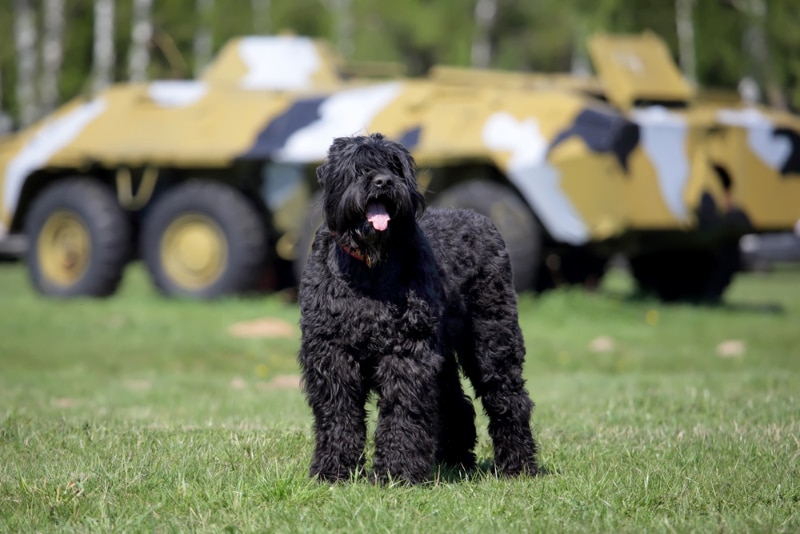
Both the Black Russian Terrier and the Giant Schnauzer are intelligent breeds that require mental and physical stimulation to keep them happy and healthy. However, there are differences in their training and exercise needs that you should consider when choosing the right breed for your lifestyle.
Black Russian Terrier:
This breed is highly trainable and eager to please their owners, making them relatively easy to train. They excel in activities such as obedience and agility and are well-suited for advanced training. However, due to their independent nature, they may challenge authority and require consistent training to ensure they don’t become too stubborn or difficult to handle.
Black Russian Terriers require daily exercise and mental stimulation to prevent boredom, which can lead to destructive behavior. A long walk or a game of fetch in the backyard will suffice, but they also enjoy more challenging activities like hiking or swimming. They thrive in an active household and may not be suitable for apartment living.
Giant Schnauzer:
Giant Schnauzers are intelligent and highly trainable but may be more challenging to handle compared to the Black Russian Terrier. They can be strong-willed and independent, so early socialization and consistent training are crucial. They excel in various activities like obedience, agility, and tracking and make great working dogs.
This breed requires daily exercise and mental stimulation, and they do well in a household that provides lots of opportunities for play and activity. They are versatile and adaptable, making them suitable for apartment living as long as their exercise needs are met.
Health Considerations: Common Issues and Lifespan
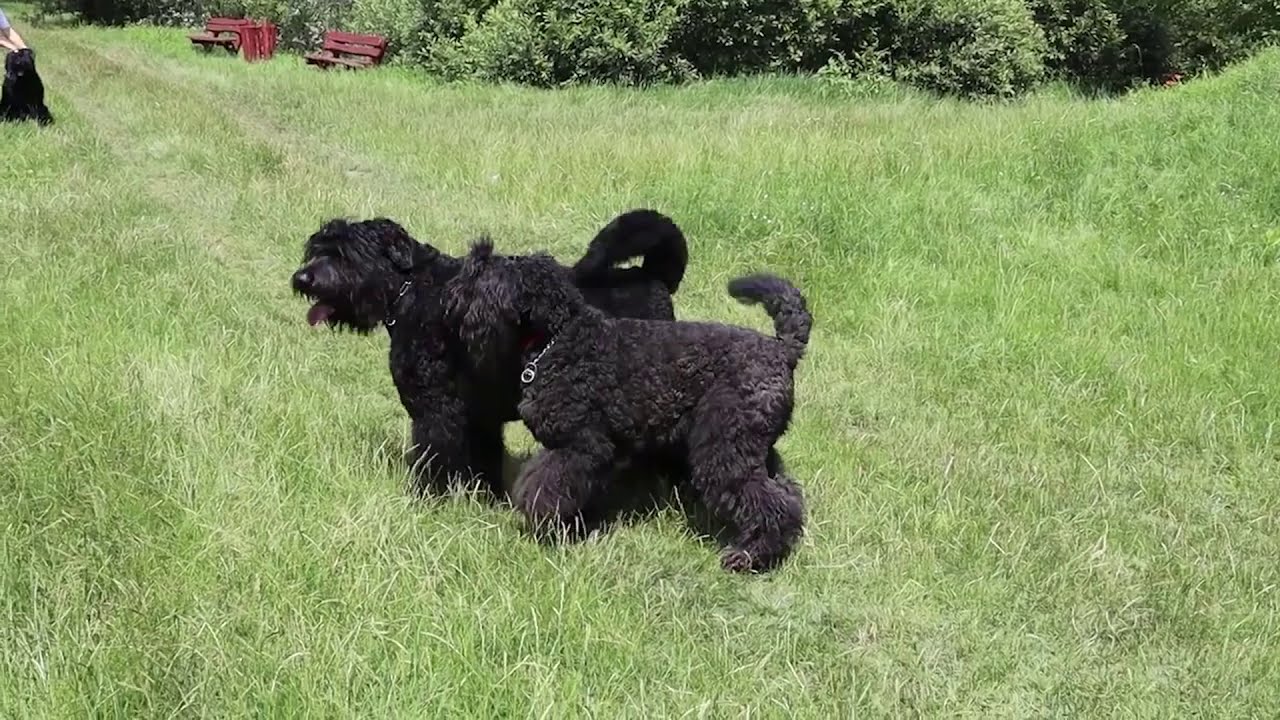
Both the Black Russian Terrier and the Giant Schnauzer are generally healthy breeds, but there are certain health issues that are more prevalent in each breed.
Black Russian Terrier:
Common health issues in this breed include hip dysplasia, elbow dysplasia, and progressive retinal atrophy (PRA). They also have a higher risk of developing bloat, a life-threatening condition where the stomach twists on itself, cutting off blood supply. The average lifespan for a Black Russian Terrier is between 10-14 years.
Giant Schnauzer:
The Giant Schnauzer is prone to hip dysplasia, gastric dilatation-volvulus (GDV) or bloat, and urinary stones. They also have a slightly higher risk of developing certain cancers such as osteosarcoma and hemangiosarcoma. The average lifespan for a Giant Schnauzer is between 12-15 years.
Living with a Black Russian Terrier or Giant Schnauzer: Considerations for Owners
When considering either breed, there are some essential factors to keep in mind to ensure a happy and harmonious life with your canine companion.
Black Russian Terrier:
As a large breed, the Black Russian Terrier requires a significant amount of space and exercise. They do not do well in apartments and thrive in homes with ample space and access to a yard. They are protective of their families and may not be suitable for households with small children or other pets, especially if not properly socialized. Additionally, their thick coat requires regular grooming, which can be time-consuming and costly.
Giant Schnauzer:
Despite its size, the Giant Schnauzer can adapt to apartment living as long as their exercise needs are met. They have a strong prey drive, so they should be supervised around smaller animals like cats. They are also known for being vocal and may bark excessively if not trained properly. Like the Black Russian Terrier, their coat requires regular grooming to maintain its health and appearance.
Conclusion
In conclusion, both the Black Russian Terrier and the Giant Schnauzer are magnificent breeds with remarkable qualities. When choosing between them, it’s essential to consider your lifestyle, living space, and level of commitment to training and exercise. Both breeds require dedicated owners who understand their needs and can provide a loving, stimulating environment for them to thrive. Whether you choose the independent and fearless Black Russian Terrier or the versatile and hardworking Giant Schnauzer, you’ll have a loyal and devoted companion by your side.
